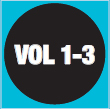The Minnesota Hotel Tape
Bob Dylan arrived in New York City in January 1961 with a dual purpose: meeting Woody Guthrie and making a name for himself in the clubs of Greenwich Village. However, he still stayed in touch with his friends in Minneapolis. During his first year in New York City, he returned to Minnesota twice, in August and in December.
Recordings at Bonnie Beecher’s
During his second trip to Minneapolis on December 22, 1961, Dylan recorded several songs on a reel-to-reel tape recorder at his friend Bonnie Beecher’s apartment. The session was prompted by Tony Glover, a blues musician, author, and music critic Bob Dylan had met a year earlier in a club in Dinkytown. All the songs recorded are listed under the name Minnesota Hotel Tape, from which three recordings were selected for The Bootleg Series: “Hard Times in New York Town” for The Bootleg Series Volumes 1–3: Rare & Unreleased, 1961–1991, and “Dink’s Song” and “I Was Young When I Left Home” for The Bootleg Series Volume 7: No Direction Home: The Soundtrack.
 | Dink’s Song Bob Dylan / 5:03 |
Musician: Bob Dylan: vocals, guitar / Recording Studio: Bonnie Beecher’s apartment, Minneapolis: December 22, 1961 / Sound Engineer: Tony Glover / Set Box: The Bootleg Series Volume 7: No Direction Home: The Soundtrack (CD 1) / Release Date: August 30, 2005
This American song, originally titled “Fare Thee Well,” was renamed “Dink’s Song” when the ethnomusicologist John Lomax recorded it in 1904 as he heard it sung by a young woman named Dink as she washed her husband’s clothes on the bank of the Brazos River in Texas. John Lomax and his son Alan published the music of “Dink’s Song” in 1934 in American Ballads and Folk Songs. Afterward the song was performed by many folk musicians, notably Pete Seeger, Dave Van Ronk, and, more recently, Jeff Buckley. The song is also featured in the soundtrack of the movie Inside Llewyn Davis by the Coen Brothers in 2013, an excellent version interpreted by Marcus Mumford and Oscar Isaac.
Dylan, singing with feeling, offers a very personal interpretation of “Dink’s Song.” His guitar playing is quite surprising, very rhythmic and played with a kind of palm mute, giving an interesting interpretation. He sets the tempo with his foot. In this he may have been influenced by John Lee Hooker, whom he had accompanied a few months earlier at Gerde’s Folk City in New York City.
During his career, he performed “Dink’s Song” just once, on April 25, 1976, with Joan Baez in Gainesville, Florida.
 | Hard Times In New York Town Bob Dylan / 2:17 |
Musician: Bob Dylan: vocals, guitar / Recording Studio: Bonnie Beecher’s apartment: Minneapolis: December 22, 1961 / Sound Engineer: Tony Glover / Set Box: The Bootleg Series Volumes 1–3: Rare & Unreleased, 1961–1991 (CD 1) / Release Date: March 26, 1991
“Hard Times in New York Town” is an original composition dating from November 1961. In it Dylan borrowed heavily from a traditional song popular among farmers in Southern states in the early twentieth century, “Down on Penny’s Farm.” Dylan did not hesitate to appropriate the version the Bentley Boys recorded for Columbia Records in 1929: same melody, same accompaniment style (guitar and banjo for the Bentleys, finger-picking guitar for Dylan), and a very similar tempo. He kept the first two lines of the song unchanged and was inspired by the line “It’s hard times in the country” for the text and title of his own version. Showing his own creativity, Dylan transformed “Down on Penny’s Farm” into an urban song evoking New York City, which he had just discovered.
When Bob Dylan recorded “Hard Times in New York Town,” Robert Shelton had already written a positive review in his column for the New York Times, and John Hammond, after making Dylan sign a contract, took him to Columbia Records Studio A for his first opus. A major step had been taken, which explains why the song was “forgotten” for his first album.
 | I Was Young When I Left Home Bob Dylan / 5:25 |
Musician: Bob Dylan: vocals, guitar / Recording Studio: Bonnie Beecher’s apartment: Minneapolis: December 22, 1961 / Sound Engineer: Tony Glover / Set Box: The Bootleg Series Volume 7: No Direction Home: The Soundtrack (CD 1) / Release Date: August 30, 2005
“I Was Young When I Left Home” is not a simple autobiographical ballad. Bob Dylan gave it a message that relates to the Beat movement: we must leave the family nest and return is only possible after we have completed our own experiences. Coincidence? This song echoes the famous parable of the prodigal son in the New Testament, but a connection can also be drawn to Joseph Conrad’s novel Lord Jim, in which the hero, after abandoning his ship and its passengers in the Red Sea, searches for redemption in Indonesia.
After the first notes on his guitar, Dylan presents his song: “I sorta made it up on a train. Huh, oh I’m here. This must be good for somebody, this sad song. I know it’s good for somebody. If it ain’t for me, it’s good for somebody.” He uses an open tuning of G to accompany himself on his Gibson J-50. He finger-picks and develops a palette of melancholy sounds that perfectly highlights the lyrics. He probably pushes himself a little to let the emotion come through in his voice, but he seems to be moved by some of the images that he evokes.